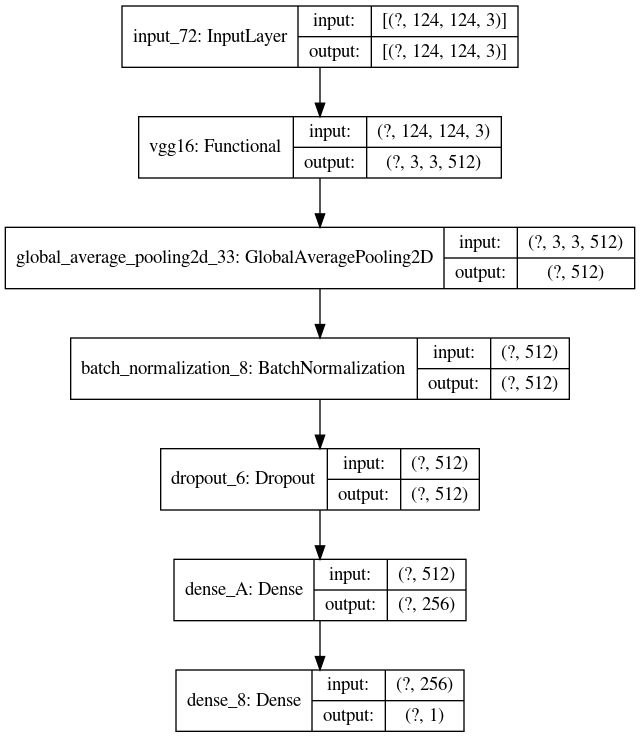class my_model(Model):
def __init__(self, dim):
super(my_model, self).__init__()
self.Base = VGG16(input_shape=(dim), include_top = False, weights = 'imagenet')
self.GAP = L.GlobalAveragePooling2D()
self.BAT = L.BatchNormalization()
self.DROP = L.Dropout(rate=0.1)
self.DENS = L.Dense(256, activation='relu', name = 'dense_A')
self.OUT = L.Dense(1, activation='sigmoid')
def call(self, inputs):
x = self.Base(inputs)
g = self.GAP(x)
b = self.BAT(g)
d = self.DROP(b)
d = self.DENS(d)
return self.OUT(d)
# AFAIK: The most convenient method to print model.summary()
# similar to the sequential or functional API like.
def build_graph(self):
x = Input(shape=(dim))
return Model(inputs=[x], outputs=self.call(x))
dim = (124,124,3)
model = my_model((dim))
model.build((None, *dim))
model.build_graph().summary()
It will produce as follows:
Layer (type) Output Shape Param #
=================================================================
input_67 (InputLayer) [(None, 124, 124, 3)] 0
_________________________________________________________________
vgg16 (Functional) (None, 3, 3, 512) 14714688
_________________________________________________________________
global_average_pooling2d_32 (None, 512) 0
_________________________________________________________________
batch_normalization_7 (Batch (None, 512) 2048
_________________________________________________________________
dropout_5 (Dropout) (None, 512) 0
_________________________________________________________________
dense_A (Dense) (None, 256) 402192
_________________________________________________________________
dense_7 (Dense) (None, 1) 785
=================================================================
Total params: 14,848,321
Trainable params: 14,847,297
Non-trainable params: 1,024
Now by using the build_graph function, we can simply plot the whole architecture.
# Just showing all possible argument for newcomer.
tf.keras.utils.plot_model(
model.build_graph(), # here is the trick (for now)
to_file='model.png', dpi=96, # saving
show_shapes=True, show_layer_names=True, # show shapes and layer name
expand_nested=False # will show nested block
)
It will produce as follows: -)

PS
有时安装Graphviz后还是提示找不到,可以在程序中加入:
os.environ[“PATH”] += os.pathsep + ‘C:/Program Files (x86)/Graphviz2.38/bin/’
参考
https://stackoverflow.com/questions/61427583/how-do-i-plot-a-keras-tensorflow-subclassing-api-model
最后
以上就是爱听歌火最近收集整理的关于Keras/Tensorflow subclassing API 实现的model,如何plot_model的全部内容,更多相关Keras/Tensorflow内容请搜索靠谱客的其他文章。
本图文内容来源于网友提供,作为学习参考使用,或来自网络收集整理,版权属于原作者所有。








发表评论 取消回复